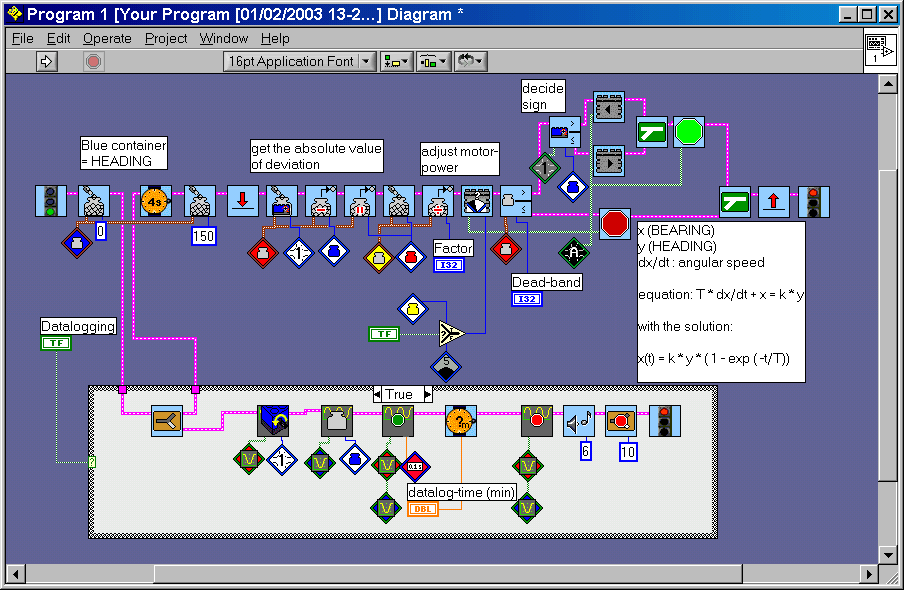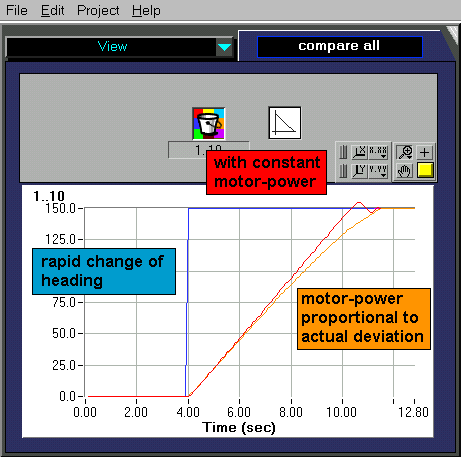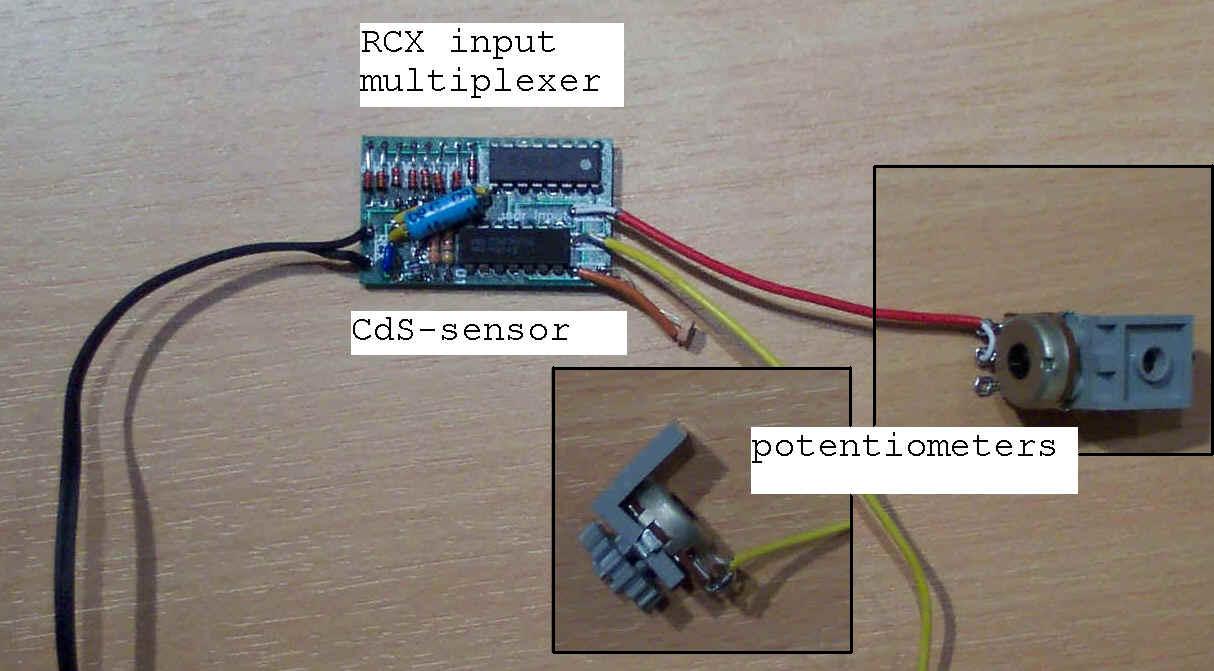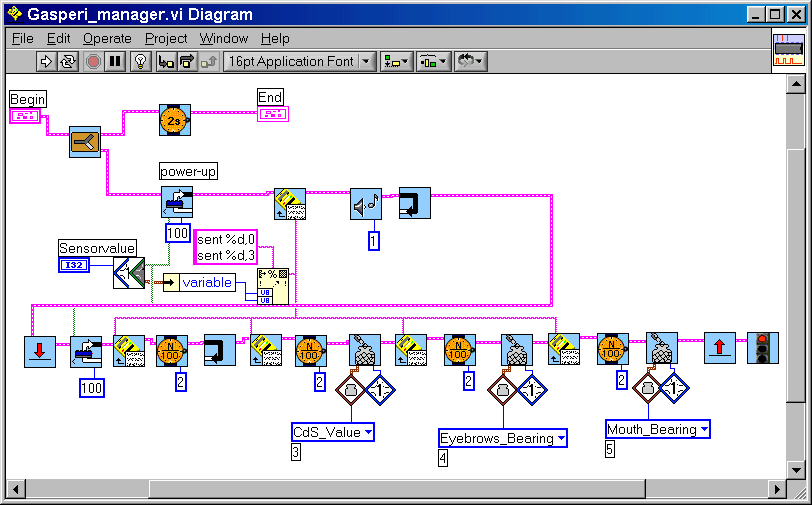
4. Special components
4.1. P-controller
If you manually attempt to change the position of GASTON's head or eyebrows, you'll notice that GASTON opposes itself to the external action. The reason is that GASTON is managed by several motor P-controllers. Each motor is coupled with an angle-sensor which always returns the actual motor-position (=BEARING). In fact there is a small delay between reading and reaction. At any change of the HEADING-position, the controller sets the correct motor-direction and the motor-power proportional to the DEVIATION (= HEADING - BEARING). The result is an exponential following and a strong hold, once the DEVIATION being smaller than the DEAD-BAND.


4.2. IR-communication
GASTON has an intensive infrared communication system.
First, the noise-sensor uses the IR-channel to transfer the data to both RCX. Noise-sensor-protocole:
| Send Message 100 | starts data-transfer |
| Remote set variable 0 (red) | fills the red container of both RCXs with the RIGHT timer-value (timer data of sound-wave impact in units of 2E-7sec) |
| Remote set variable 1 (blue) | fills the blue container of both RCXs with the TOP timer-value |
| Remote set variable 2 (yellow) | fills the yellow container of both RCXs with the LEFT timer-value |
| Send Message 101 | closes the data-transmission |
The RCXs exchange the following messages :
| Message 1 | Blue timer request |
| Message 10 | Blue timer release |
| Message 2 | Red timer request |
| Message 20 | Red timer release |
| Message 3 | Temperature request |
| Message 30 | Temperature release |
| Message 4 | Light request |
| Message 40 | Light release |
| Message 50 | Watchdog event |
The watchdog has been added to both RCXs for the reason that under certain rare conditions, there might be an IR-signal collusion. In this case, it might happen that one RCX does not get the necessary release message. This leads to some kind of mixt and unprevisible behaviour. The watchdog timers generate an event after some time leading to a massive IR-sending of message 50. If this message is received from any RCX, the hierarchy immediately returns to the basic configuration.
4.3. Mike Gasperi's input multiplexer

GASTON needs more input lines two RCXs are able to provide. Therefore one anal-channel is extended by an input-multiplexer. This is done through Mike Gasperi's presented in Nuts and Volts magazine . Two 50k potentiometers use 2 multiplexer inputs and return information about the positions of mouth and eyebrows. A third multiplexer input is occupied by a CdS light-sensor. The multiplexer is clocked through a pulse generated by switching RCX input type from unpowered to powered.

4.4. Noise-sensor
GASTON is equipped with a 3-channel precedence sensor.
Detail : see GASTON's ears.